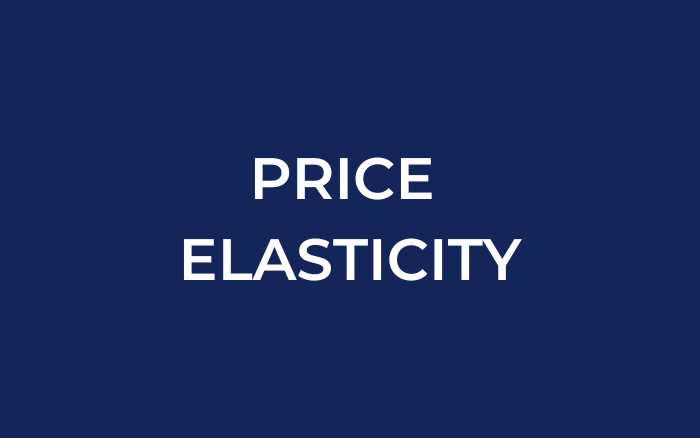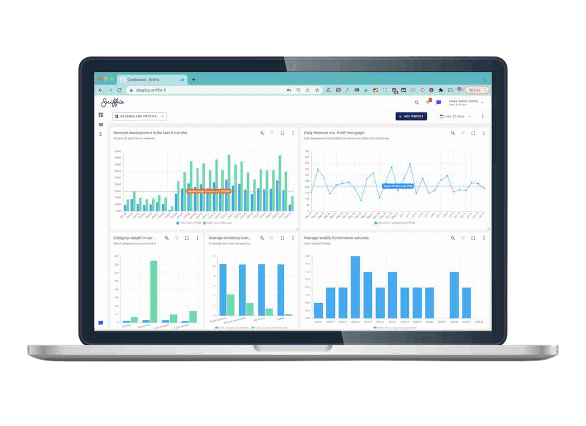
Price elasticity
Price elasticity measures the change in demand when you change price of a product up or down. Price elasticity is an important factor to understand when you price your products. It helps you to set prices that capture the demand and let you optimize your market share.
Price elasticity refers to the extent to which changes in price affect the demand for a product. In other words, it measures the responsiveness of consumers to changes in the price of a product. If a product is price elastic, a small change in price will result in a large change in the demand for that product. On the other hand, if a product is price inelastic, changes in price will have little effect on the demand for that product.
Use Our Free Price Elasticity Calculator
Use this simple calculator to calculate your product’s price elasticity and understand how price changes affect your product’s demand.

This concept is relevant for retailers and ecommerce businesses as it helps them determine the optimal price for a product. If a product has high price elasticity, it may not be possible to charge a high price without negatively impacting demand. In this case, it may be better to lower the price to increase demand and sales. On the other hand, if a product has low price elasticity, a business may be able to increase the price without significantly affecting demand.
It is important to note that price elasticity can vary greatly depending on the product and the market. For example, necessities such as food and medicine tend to have low price elasticity, while luxury items may have high price elasticity.
Retailers and ecommerce businesses can use market research and consumer data to determine the price elasticity of their products. This information can be used to set prices, develop promotions and sales strategies, and make informed decisions about product pricing and margins.
In ecommerce and retail businesses, understanding price elasticity can impact pricing in the following ways:
Profit maximization: Businesses can use data on price elasticity to determine the optimal price point for a product or service in order to maximize profits.
Market positioning: Businesses can use price elasticity data to position their products in the market, such as setting a higher price for luxury products or a lower price for budget products.
Cost-based pricing: Businesses can use cost-based pricing, where prices are set based on the costs of production, to determine the appropriate price point for a product or service.
Price anchoring: Businesses can use price anchoring, where they set a higher price for a product and then offer a discounted price, to create the perception of a better deal for consumers.
Promotions and discounts: Businesses can use promotions and discounts to appeal to price-sensitive consumers.
Long-term impact: Businesses can use data on price elasticity to predict the long-term impact of changes in price on demand and revenue.
Maximize your profits!
Maximize sales and profits while maintaining customer satisfaction with our state-of-the-art software. Integrate effortlessly with your ecommerce platform and receive valuable insights for strategic pricing choices. Whether you’re a startup or an established retailer, our solution is tailored to drive results.

Summary
Price elasticity refers to the degree to which the demand for a product or service changes in response to changes in price. Understanding the elasticity of price is crucial for ecommerce and retail businesses to determine the optimal price for their products and make informed pricing decisions. By taking into account the responsiveness of consumers to changes in price, businesses can maximize sales and profits while maintaining customer satisfaction by creating the perception of a better deal, appealing to price-sensitive consumers, and predicting the long-term impact of changes in price.
FAQ
Most frequent questions and answers
Price elasticity of demand (PED) measures the responsiveness of the quantity demanded for a product or service to a change in its price. It’s a dimensionless ratio, calculated by dividing the percentage change in quantity demanded by the percentage change in price. The concept is fundamental in understanding the market sensitivity to price changes and plays a crucial role in pricing strategies and demand forecasting.
The value of price elasticity can be interpreted as follows:
If PED is greater than 1, demand is said to be ‘elastic.’ That means customers are price sensitive, and sales quantity can significantly change with a small change in price.
If PED is less than 1 but greater than 0, demand is said to be ‘inelastic.’ Customers are less sensitive to price changes. A significant change in price results in a less than proportionate change in quantity demanded.
If PED equals 1, demand is said to be ‘unit elastic.’ A percentage change in price will result in an equivalent percentage change in quantity demanded.
A “good” price elasticity is subjective and depends on a company’s objectives. If the goal is to increase revenue, then it might be desirable to have a product with inelastic demand so the firm can increase prices without significantly reducing the quantity sold.
Elastic products are those for which demand significantly changes with price fluctuations. They often have close substitutes or are non-essential goods. Examples might include luxury goods, brand-name clothes, or restaurant meals.
Inelastic products, on the other hand, are those for which demand does not significantly change when the price changes. These are typically goods that are essential or do not have close substitutes. Examples might include gasoline, medicines, or staple foods like rice or bread.
Understanding price elasticity can be incredibly useful for businesses, as it impacts revenue, demand, and profitability. Here’s how it can be used:
Pricing Strategy: If a product has elastic demand, a company might lower prices to increase total revenue. Conversely, if a product has inelastic demand, a firm may increase prices to boost revenue. A worth while information to create a good pricing strategy.
Product Positioning and Marketing: If a company wants to make a product’s demand more inelastic, it could invest in brand building and differentiation, reducing the perceived availability of substitutes.
Revenue Forecasting: By understanding how changes in price impact demand, businesses can more accurately forecast future revenues and profits.
Demand Forecasting: During periods of supply constraints, companies might increase prices to manage demand levels, provided the demand is price elastic.

